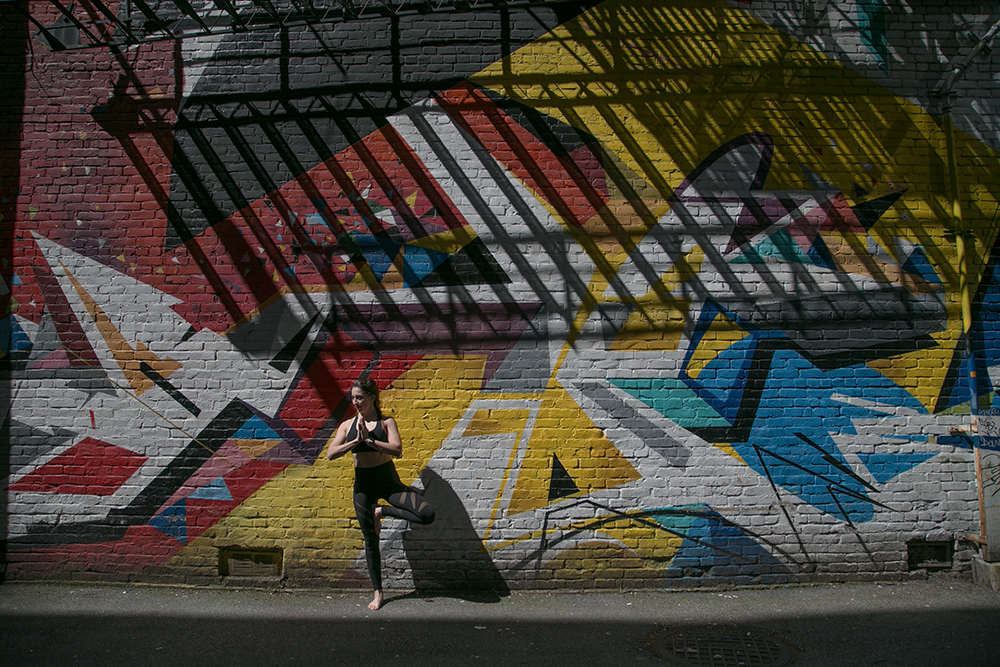Our 5 Favourite Asanas
When you come into yoga class, there’s some things that you can expect every day when you walk in. Your breath will always be important. We’ll always consider the connection between mind and body. But what you do between walking onto your mat, and lying down in shavasana can differ with every class you’re walking into. One of the ways that you’ll find novelty in each practice is through the different combinations of asanas that you’ll practice in each class.
What is an asana?
An asana refers to the poses we practice in yoga. As explained by Yoga International, asana is part of a path from the “Yoga Sutra of Patanjali”, which is meant to “strike a balance between steadines and ease”. In other words, when you practice an asana, you’re trying to work to become secure yet comfortable in the pose you are holding. Asanas play an important part in our yoga practice, and whether you are aware of it or not you’ve likely learned some throughout your yoga classes. We all have different asanas that feel more comfortable in our bodies, ones that push us more, ones we dread a little bit, and ones we look forward to. While this list is constantly changing, here are five of our favorite asanas today.
Trikonasana, aka triangle pose
Before you tried practicing yoga, you might have wondered just how people are able to contort their body into such unique poses. Triangle pose is one of these poses, executed by standing with your two legs apart reaching your arm towards the floor over your front leg. Triangle pose both stretches and strengthens our legs, core, shoulders, and chest, while testing our balance and alignment.
Utkatasana, aka chair pose
Part of what makes chair pose so great is how difficult it can be to accomplish. After all, the asana is essentially asking you to sit on a chair that isn’t there. It takes balance, strength, and determination. To perform chair pose, you bend your knees and sit back as if there’s a chair behind you, creating a right ankle between your thighs and torso. Chair pose helps us to build strength, specifically in our legs, but also our back and core. Take a moment to recognize and appreciate the effort that you’re putting into this position, and honour the strength it’s bringing you through repetitive practice.
Salamba Sirsana, aka supported headstand pose
Its great to have something to work towards and feel a sense of accomplishment for achieving. A headstand is one of those poses which simply feels like a big step when you learn it, and a supported headstand is a great step towards this goal. Practicing a headstand puts your head below your heart, which has been found to “[help] relax strain on the heart, harmoniz your circulation and rush oxygen-rich lbood to your upper body”, all ways you can impact your wellbeing. Not to mention, practicing a headstand quite literally gives us the chance to look at the world from a new perspective.
Ananda Balasana, aka Happy Baby Pose
We all want to feel like a kid sometimes, and everytime happy baby pose comes around in yoga class, it gives us a few moments to sit like we might have as a baby, and wonder why we ever stopped sitting this way at all. Sitting in this pose can help stretch your things, hips, hamstrings, and groin. Practicing this pose is also a great way to prepare for upcoming seated poses, or potentially just all the sitting we do in our everyday lives. To practice this asana, you lay flat on your back, holding the outside edge of each of your feet as you place your legs in a squat-like position. Next time this pose comes up in your practice, or when you take a few minutes to practice it as your own
Vrikshasana, aka Tree pose
Tree pose is a classic for a reason. If you know anything about yoga, tree pose is likely one of the poses that comes to mind. Tree pose involves standing steady on one leg while you place your other leg in a triangle like shape against your standing leg. There’s some variations for where your hands might be in this poition, from a prayer position to over your head. Depending on what works for your body, you might also have variation on where on your standing leg the other falls. But no matter how you perform tree pose, it gives you the chance both to practice your grounding as you balance and your reach as you grow towards the sky.
What are your favourite asanas? Let u know next time you come into the studio, and maybe you’ll see them incorporated into an upcoming class soon.

